Cannabis and cannabinoids for symptomatic treatment for people with multiple sclerosis
- PMID: 35510826
- PMCID: PMC9069991
- DOI: 10.1002/14651858.CD013444.pub2
Cannabis and cannabinoids for symptomatic treatment for people with multiple sclerosis
Abstract
Background: Spasticity and chronic neuropathic pain are common and serious symptoms in people with multiple sclerosis (MS). These symptoms increase with disease progression and lead to worsening disability, impaired activities of daily living and quality of life. Anti-spasticity medications and analgesics are of limited benefit or poorly tolerated. Cannabinoids may reduce spasticity and pain in people with MS. Demand for symptomatic treatment with cannabinoids is high. A thorough understanding of the current body of evidence regarding benefits and harms of these drugs is required.
Objectives: To assess benefit and harms of cannabinoids, including synthetic, or herbal and plant-derived cannabinoids, for reducing symptoms for adults with MS.
Search methods: We searched the following databases from inception to December 2021: MEDLINE, Embase, the Cochrane Central Register of Controlled Trials (CENTRAL, the Cochrane Library), CINAHL (EBSCO host), LILACS, the Physiotherapy Evidence Database (PEDro), the World Health Organisation International Clinical Trials Registry Platform, the US National Institutes of Health clinical trial register, the European Union Clinical Trials Register, the International Association for Cannabinoid Medicines databank. We hand searched citation lists of included studies and relevant reviews.
Selection criteria: We included randomised parallel or cross-over trials (RCTs) evaluating any cannabinoid (including herbal Cannabis, Cannabis flowers, plant-based cannabinoids, or synthetic cannabinoids) irrespective of dose, route, frequency, or duration of use for adults with MS.
Data collection and analysis: We followed standard Cochrane methodology. To assess bias in included studies, we used the Cochrane Risk of bias 2 tool for parallel RCTs and crossover trials. We rated the certainty of evidence using the GRADE approach for the following outcomes: reduction of 30% in the spasticity Numeric Rating Scale, pain relief of 50% or greater in the Numeric Rating Scale-Pain Intensity, much or very much improvement in the Patient Global Impression of Change (PGIC), Health-Related Quality of Life (HRQoL), withdrawals due to adverse events (AEs) (tolerability), serious adverse events (SAEs), nervous system disorders, psychiatric disorders, physical dependence.
Main results: We included 25 RCTs with 3763 participants of whom 2290 received cannabinoids. Age ranged from 18 to 60 years, and between 50% and 88% participants across the studies were female. The included studies were 3 to 48 weeks long and compared nabiximols, an oromucosal spray with a plant derived equal (1:1) combination of tetrahydrocannabinol (THC) and cannabidiol (CBD) (13 studies), synthetic cannabinoids mimicking THC (7 studies), an oral THC extract of Cannabis sativa (2 studies), inhaled herbal Cannabis (1 study) against placebo. One study compared dronabinol, THC extract of Cannabis sativa and placebo, one compared inhaled herbal Cannabis, dronabinol and placebo. We identified eight ongoing studies. Critical outcomes • Spasticity: nabiximols probably increases the number of people who report an important reduction of perceived severity of spasticity compared with placebo (odds ratio (OR) 2.51, 95% confidence interval (CI) 1.56 to 4.04; 5 RCTs, 1143 participants; I2 = 67%; moderate-certainty evidence). The absolute effect was 216 more people (95% CI 99 more to 332 more) per 1000 reporting benefit with cannabinoids than with placebo. • Chronic neuropathic pain: we found only one small trial that measured the number of participants reporting substantial pain relief with a synthetic cannabinoid compared with placebo (OR 4.23, 95% CI 1.11 to 16.17; 1 study, 48 participants; very low-certainty evidence). We are uncertain whether cannabinoids reduce chronic neuropathic pain intensity. • Treatment discontinuation due to AEs: cannabinoids may increase slightly the number of participants who discontinue treatment compared with placebo (OR 2.41, 95% CI 1.51 to 3.84; 21 studies, 3110 participants; I² = 17%; low-certainty evidence); the absolute effect is 39 more people (95% CI 15 more to 76 more) per 1000 people. Important outcomes • PGIC: cannabinoids probably increase the number of people who report 'very much' or 'much' improvement in health status compared with placebo (OR 1.80, 95% CI 1.37 to 2.36; 8 studies, 1215 participants; I² = 0%; moderate-certainty evidence). The absolute effect is 113 more people (95% CI 57 more to 175 more) per 1000 people reporting improvement. • HRQoL: cannabinoids may have little to no effect on HRQoL (SMD -0.08, 95% CI -0.17 to 0.02; 8 studies, 1942 participants; I2 = 0%; low-certainty evidence); • SAEs: cannabinoids may result in little to no difference in the number of participants who have SAEs compared with placebo (OR 1.38, 95% CI 0.96 to 1.99; 20 studies, 3124 participants; I² = 0%; low-certainty evidence); • AEs of the nervous system: cannabinoids may increase nervous system disorders compared with placebo (OR 2.61, 95% CI 1.53 to 4.44; 7 studies, 1154 participants; I² = 63%; low-certainty evidence); • Psychiatric disorders: cannabinoids may increase psychiatric disorders compared with placebo (OR 1.94, 95% CI 1.31 to 2.88; 6 studies, 1122 participants; I² = 0%; low-certainty evidence); • Drug tolerance: the evidence is very uncertain about the effect of cannabinoids on drug tolerance (OR 3.07, 95% CI 0.12 to 75.95; 2 studies, 458 participants; very low-certainty evidence).
Authors' conclusions: Compared with placebo, nabiximols probably reduces the severity of spasticity in the short-term in people with MS. We are uncertain about the effect on chronic neurological pain and health-related quality of life. Cannabinoids may increase slightly treatment discontinuation due to AEs, nervous system and psychiatric disorders compared with placebo. We are uncertain about the effect on drug tolerance. The overall certainty of evidence is limited by short-term duration of the included studies.
Copyright © 2022 The Cochrane Collaboration. Published by John Wiley & Sons, Ltd.
Conflict of interest statement
GF: none
SM: none
FB: She received research grants from GW pharmaceuticals (Cambridge, UK) to perform preclinical studies on phytocannabinoids and intestinal diseases, and patents on phytocannabinoids and colorectal cancer or inflammatory bowel diseases
MC: none
KD: She is employed as statistical editor by Cochrane
Figures

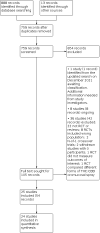
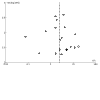
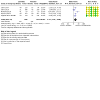
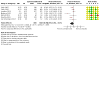

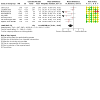
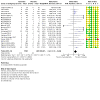
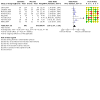
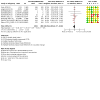

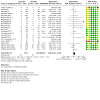
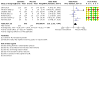
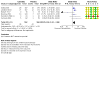
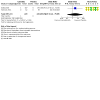
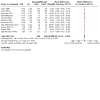
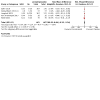
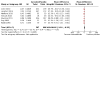
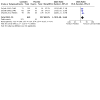
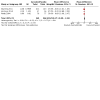
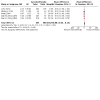
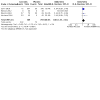
Update of
- doi: 10.1002/14651858.CD013444
Similar articles
-
Cannabis-based medicines for chronic neuropathic pain in adults.Cochrane Database Syst Rev. 2018 Mar 7;3(3):CD012182. doi: 10.1002/14651858.CD012182.pub2. Cochrane Database Syst Rev. 2018. PMID: 29513392 Free PMC article. Review.
-
Cannabis-based medicines and medical cannabis for adults with cancer pain.Cochrane Database Syst Rev. 2023 Jun 5;6(6):CD014915. doi: 10.1002/14651858.CD014915.pub2. Cochrane Database Syst Rev. 2023. PMID: 37283486 Free PMC article. Review.
-
Folic acid supplementation and malaria susceptibility and severity among people taking antifolate antimalarial drugs in endemic areas.Cochrane Database Syst Rev. 2022 Feb 1;2(2022):CD014217. doi: 10.1002/14651858.CD014217. Cochrane Database Syst Rev. 2022. PMID: 36321557 Free PMC article.
-
Cannabis for the treatment of Crohn's disease.Cochrane Database Syst Rev. 2018 Nov 8;11(11):CD012853. doi: 10.1002/14651858.CD012853.pub2. Cochrane Database Syst Rev. 2018. PMID: 30407616 Free PMC article.
-
Cannabis for the treatment of ulcerative colitis.Cochrane Database Syst Rev. 2018 Nov 8;11(11):CD012954. doi: 10.1002/14651858.CD012954.pub2. Cochrane Database Syst Rev. 2018. PMID: 30406638 Free PMC article.
Cited by
-
Cannabis-Based Phytocannabinoids: Overview, Mechanism of Action, Therapeutic Application, Production, and Affecting Environmental Factors.Int J Mol Sci. 2024 Oct 19;25(20):11258. doi: 10.3390/ijms252011258. Int J Mol Sci. 2024. PMID: 39457041 Free PMC article. Review.
-
Comparative targeted lipidomics between serum and cerebrospinal fluid of multiple sclerosis patients shows sex and age-specific differences of endocannabinoids and glucocorticoids.Acta Neuropathol Commun. 2024 Oct 10;12(1):160. doi: 10.1186/s40478-024-01864-2. Acta Neuropathol Commun. 2024. PMID: 39385315 Free PMC article.
-
Cannabis, cannabinoids and health: a review of evidence on risks and medical benefits.Eur Arch Psychiatry Clin Neurosci. 2024 Sep 19. doi: 10.1007/s00406-024-01880-2. Online ahead of print. Eur Arch Psychiatry Clin Neurosci. 2024. PMID: 39299947 Review.
-
Efficacy of cannabinoids compared to the current standard treatments on symptom relief in persons with multiple sclerosis (CANSEP trial): study protocol for a randomized clinical trial.Front Neurol. 2024 Jul 24;15:1440678. doi: 10.3389/fneur.2024.1440678. eCollection 2024. Front Neurol. 2024. PMID: 39114536 Free PMC article.
-
The State of Synthetic Cannabinoid Medications for the Treatment of Pain.CNS Drugs. 2024 Aug;38(8):597-612. doi: 10.1007/s40263-024-01098-9. Epub 2024 Jul 1. CNS Drugs. 2024. PMID: 38951463 Review.
References
References to studies included in this review
Aragona 2009 {published data only}
-
- Aragona M, Onesti E, Tomassini V, Conte A, Gupta S, Gilio F, et al.Psychopathological and cognitive effects of therapeutic cannabinoids in multiple sclerosis: a double-blind, placebo controlled, crossover study. Clinical Neuropharmacology 2009;32(1):41-7. - PubMed
-
- Conte A, Bettolo CM, Onesti E, Frasca V, Iacovelli E, Gilio F, et al.Cannabinoid-induced effects on the nociceptive system: a neurophysiological study in patients with secondary progressive multiple sclerosis. European Journal of Pain 2009;13(5):472-7. - PubMed
Collin 2007 {published data only}
-
- Collin C, Davies P, Mutiboko IK, Ratcliffe S for the Sativex Spasticity in MS Study Group.Randomized controlled trial of cannabis-based medicine in spasticity caused by multiple sclerosis. European Journal of Neurology 2007;14(3):290-6. - PubMed
-
- NCT00711646.A study of Sativex® for relief of spasticity in subjects with multiple sclerosis. clinicaltrials.gov/ct2/show/results/NCT00711646 (first posted July 9, 2008).
-
- Serpell MG, Notcutt W, Collin C.Sativex long-term use: an open-label trial in patients with spasticity due to multiple sclerosis. Journal of Neurology 2013;260(1):285-95. - PubMed
Collin 2010 {published data only}
-
- Collin C, Ehler E, Waberzinek G, Alsindi Z, Davies P, Powell K, et al.A double-blind, randomized, placebo-controlled, parallel-group study of Sativex, in subjects with symptoms of spasticity due to multiple sclerosis. Neurological Research 2010;32(5):451-9. - PubMed
-
- NCT01599234.A study to evaluate the efficacy of Sativex in relieving symptoms of spasticity due to multiple sclerosis. clinicaltrials.gov/ct2/show/results/NCT01599234 (first posted May 15, 2012).
Corey‐Bloom 2012 {published data only}
Fox 2004 {published data only}
-
- Fox P, Bain PG, Glickman S, Carroll C, Zajicek J.The effect of cannabis on tremor in patients with multiple sclerosis. Neurology 2004;62(7):1105-9. - PubMed
Kavia 2010 {published data only}
-
- Kavia RB, De Ridder D, Constantinescu CS, Stott CG, Fowler CJ.Randomized controlled trial of Sativex to treat detrusor overactivity in multiple sclerosis. Multiple Sclerosis (Houndmills, Basingstoke, England) 2010;16(11):1349–59. - PubMed
Killestein 2002 {published data only}
-
- Killestein J, Hoogervorst EL, Reif M, Blauw B, Smits M, Uitdehaag BM, et al.Immunomodulatory effects of orally administered cannabinoids in multiple sclerosis. Journal of Neuroimmunology 2003;137(1-2):140-3. - PubMed
-
- Killestein J, Hoogervorst EL, Reif M, Kalkers NF, Van Loenen AC, Staats PG, et al.Safety, tolerability, and efficacy of orally administered cannabinoids in MS. Neurology 2002;58(9):1404-7. - PubMed
Langford 2013 {published data only}
-
- Langford RM, Mares J, Novotna A, Vachova M, NovakovaI, Notcutt W, et al.A double-blind, randomized, placebo controlled,parallel-group study of THC/CBD oromucosal spray in combination with the existing treatment regimen,in the relief of central neuropathic pain in patients with multiple sclerosis. Journal of Neurology 2013;260:984–97. - PubMed
-
- NCT00391079.Sativex versus placebo when added to existing treatment for central neuropathic pain in MS. clinicaltrials.gov/ct2/show/results/NCT00391079 (first posted October 23, 2006).
Leocani 2015 {published data only}
-
- Leocani L, Nuara A, Houdayer E, Schiavetti I, Del Carro U, Amadio S, et al.Sativex(®) and clinical-neurophysiological measures of spasticity in progressive multiple sclerosis. Journal of Neurology 2015;262(11):2520-7. - PubMed
-
- NCT01538225.Neurophysiological study of Sativex in Multiple Sclerosis (MS) spasticity (NS-MSS). clinicaltrials.gov/ct2/show/results/NCT01538225 (first posted February 24, 2012).
Markova 2018 {published data only}
-
- EudraCT Number: 2015-004451-40.The Savant trial. www.clinicaltrialsregister.eu/ctr-search/trial/2015-004451-40/AT/ (first posted 2016, January 14).
-
- Markovà J, Essner U, Akmaz B, Marinelli M, Trompke C, Lentschat A.Sativex® as Add-on therapy Vs. further optimized first-line ANTispastics (SAVANT) in resistant multiple sclerosis spasticity: a double-blind,placebo-controlled randomised clinical trial. International Journal of Neuroscience 2018;129(2):119-28. - PubMed
-
- Meuth SG, Henze T, Essner U, Trompke C, Vila Silván C.Tetrahydrocannabinol and cannabidiol oromucosal spray in resistant multiple sclerosis spasticity: consistency of response across subgroups from the SAVANT randomized clinical trial. International Journal of Neuroscience 2020;130(12):1199-205. - PubMed
NCT00682929 {published data only}
-
- NCT00682929.Cannabis for spasticity in multiple sclerosis. clinicaltrials.gov/ct2/show/results/NCT00682929 (first posted May 23, 2008).
NCT01606176 {unpublished data only}
-
- NCT01606176.A study to evaluate the effects of Cannabis based medicine in patients with pain of neurological origin. clinicaltrials.gov/ct2/show/results/NCT01606176 (last update posted September 3, 2012).
Notcutt 2012 {published data only}
-
- NCT00702468.Evaluate the maintenance of effect after long-term treatment with Sativex® in subjects with symptoms of spasticity due to Multiple Sclerosis. clinicaltrials.gov/ct2/show/results/NCT00702468 (first posted: June 20, 2008).
-
- Notcutt W, Langford R, Davies P, Ratcliffe S, Potts R.A placebo-controlled, parallel-group, randomized withdrawal study of subjects with symptoms of spasticity due to multiple sclerosis who are receiving long-term Sativex® (nabiximols). Multiple Sclerosis Journal 2012;18(2):219–28. - PubMed
Novotna 2011 {published data only}
-
- Haupts M, Vila C, Jonas A, Witte K, Álvarez-Ossorio L.Influence of previous failed antispasticity therapy on the efficacy and iolerability of THC:CBD oromucosal spray for Multiple Sclerosis spasticity. European Neurology 2016;75(5-6):236-43. - PubMed
-
- NCT00681538.A study of the safety and effectiveness of Sativex®, for the relief of symptoms of spasticity in subjects, from phase B, with Multiple Sclerosis (MS). clinicaltrials.gov/ct2/show/results/NCT00681538 (first posted: May 21, 2008).
-
- Novotna A, Mares J, Ratcliffe S, Novakova I, VachovaM, Zapletalova O, et al.A randomized, double-blind,placebo-controlled, parallel-group, enriched-design study of nabiximols (Sativex(®)), as add-on therapy, in subjects with refractory spasticity caused by multiple sclerosis. European Journal of Neurology 2011;18:1122–31. - PubMed
Rog 2005 {published data only}
-
- NCT01604265.A study of Sativex in the treatment of central neuropathic pain due to multiple sclerosis. clinicaltrials.gov/ct2/show/results/NCT01604265 (first posted: May 23, 2012).
-
- Rog DJ, Nurmikko TJ, Friede T, Young CA.Randomized, controlled trial of cannabis-based medicine in central pain in multiple sclerosis. Neurology 2005;65:812–9. - PubMed
-
- Rog DJ, Nurmikko TJ, Young CA.Oromucosal delta9-tetrahydrocannabinol/cannabidiol for neuropathic pain associated with multiple sclerosis: an uncontrolled, open-label, 2-year extension trial. ClinicalTherapeutics 2007;29(9):2068-79. - PubMed
Schimrigk 2017 {published data only}
-
- NCT00959218.Efficacy and safety of the pain relieving effect of Dronabinol in central neuropathic pain related to multiple sclerosis. clinicaltrials.gov/ct2/show/results/NCT00959218 (first posted: August 14, 2009).
Svendsen 2004 {published data only}
Turcotte 2015 {published data only}
-
- NCT00480181.Efficacy and safety evaluation of Nabilone as adjunctive therapy to Gabapentin for the management of neuropathic pain in multiple sclerosis. clinicaltrials.gov/ct2/show/results/NCT00480181 (first posted: May 30, 2007).
-
- Turcotte D, Doupe M, Torabi M, Gomori A, Ethans K, Esfahani F, et al.Nabilone as an adjunctive to gabapentin for multiple sclerosis-induced neuropathic pain: a randomized controlled trial. Pain Medicine 2015;16:149–59. - PubMed
Vachova 2014 {published data only}
-
- NCT01964547.A randomized study of Sativex on cognitive function and mood: multiple sclerosis patients. clinicaltrials.gov/ct2/show/results/NCT01964547 (first posted: October 17, 2013).
-
- Vachová M, Novotná A, Mares J, Taláb R, Fiedler J, Lauder H, et al.A multicentre, double-blind, randomised, parallel-group, placebo-controlled study of effect of long-term Sativex® treatment on cognition and mood of patients with spasticity due to multiple sclerosis. Journal of Multiple Sclerosis 2014;1(2):1000122.
-
- Wright S, Vachova MM, Novakova I.The effect of long-term treatment with a prescription cannabis-based THC: CBD oromucosal spray on cognitive function and mood: a 12 month double blind placebo-controlled study in people with spasticity due to multiple sclerosis. Multiple Sclerosis Journal 2013;19(11 Suppl):P1206.
Van Amerongen 2017 {published data only}
-
- EudraCT Number: 2010-022033-28.A two-phased, randomized, double blind, placebo-controlled study of ECP002A (Δ9-THC) to determine safety, tolerability and efficacy in multiple sclerosis patients suffering from spasticity and pain. www.clinicaltrialsregister.eu/ctr-search/trial/2010-022033-28/NL (first posted: October 26, 2010).
-
- Amerongen G, Kanhai K, Baakman AC, Heuberger J, Klaassen E, Beumer TL, et al.Effects on spasticity and neuropathic pain of an oral formulation of Δ9-tetrahydrocannabinol in patients with progressive multiple sclerosis. Clinical Therapeutics 2017;40(9):1467-82. - PubMed
Vaney 2004 {published data only}
-
- Vaney C, Heinzel-Gutenbrunner M, Jobin P, Tschopp F, Gattlen B, Hagen U, et al.Efficacy, safety and tolerability of an orally administered cannabis extract in the treatment of spasticity in patients with multiple sclerosis: a randomized, double-blind, placebo-controlled, crossover study. Multiple Sclerosis (Houndmills, Basingstoke, England) 2004;10(4):417-24. - PubMed
Wade 2004 {published data only}
-
- NCT01610700.An investigation of delta-9-tetrahydrocannabinol (THC) and cannabidiol (CBD) in multiple sclerosis patients. clinicaltrials.gov/ct2/show/results/NCT01610700 (first posted June 4, 2012).
-
- Wade DT, Makela P, Robson P, House H, Bateman C.Do cannabis-based medicinal extracts have general or specific effects on symptoms in multiple sclerosis? A double-blind,randomized, placebo-controlled study on 160 patients. Multiple Sclerosis (Houndmills, Basingstoke, England) 2004;10:434–41. - PubMed
-
- Wade DT, Makela PM, House H, Bateman C, Robson P.Long-term use of a cannabis-based medicine in the treatment of spasticity and other symptoms in multiple sclerosis. Multiple Sclerosis (Houndmills, Basingstoke, England) 2006;12(5):639-45. - PubMed
Zajicek 2003_CAMS {published data only}
-
- Freeman RM, Adekanmi O, Waterfield MR, Waterfield AE, Wright D, Zajicek J.The effect of cannabis on urge incontinence in patients with multiple sclerosis: a multicentre, randomised placebo-controlled trial (CAMS-LUTS). International Urogynecology Journal 2006;17:636–41. - PubMed
-
- Grotenhermen F.Cannabinoids do not reduce objective measurements in muscle spasticity, but people with multiple sclerosis perceive some benefit. Evidence-Based Healthcare 2004;8:159-61.
-
- Zajicek J, Fox P, Sanders H, Wright D, Vickery J, Nunn A, et al.Cannabinoids for treatment of spasticity and other symptoms related to multiple sclerosis (CAMS study): multicentre randomized placebo-controlled trial. Lancet 2003;362:1517–26. - PubMed
ZAJICEK 2012 MUSEC {published data only}
-
- NCT00552604.MUltiple Sclerosis and Extract of Cannabis (MUSEC) study (MUSEC). clinicaltrials.gov/ct2/show/results/NCT00552604 (first posted: November 2, 2007).
-
- Zajicek JP, Hobart JC, Slade A, Barnes D, Mattison PG, MUSEC Research Group.Multiple sclerosis and extract of cannabis: results of the MUSEC trial. Journal of Neurology, Neurosurgery and Psychiatry 2012;83:1125–32. - PubMed
Zajicek 2013_CUPID {published data only}
-
- Ball S, Vickery J, Hobart J, Wright D, Green C, Shearer J, et al.The Cannabinoid Use in Progressive Inflammatory brain Disease (CUPID) trial: a randomised double-blind placebo-controlled parallel-group multicentre trial and economic evaluation of cannabinoids to slow progression in multiple sclerosis. Health Technology Assessment (Winchester, England) 2015;19(12:vii-viii, xxv-xxxi):1-187. - PMC - PubMed
-
- ISRCTN62942668.The cannabinoid use in progressive inflammatory brain disease (CUPID) trial. doi.org/10.1186/ISRCTN62942668 (first posted: May 3, 2005).
References to studies excluded from this review
Alessandria 2020 {published data only}
-
- Alessandria G, Meli R, Infante MT, Vestito L, Capello E, Bandini F.Long-term assessment of the cognitive effects of nabiximols in patients with multiple sclerosis: a pilot study. Clinical Neurology and Neurosurgery 2020;196:105990. - PubMed
Banister 2019 {published data only}
-
- Banister SD, Arnold JC, Connor M, Glass M, McGregor IS.Dark classics in chemical neuroscience: Δ9-tetrahydrocannabinol. ACS Chemical Neuroscience 2019;10(5):2160-75. - PubMed
Black 2019 {published data only}
Calabrò 2020 {published data only}
-
- Calabrò RS, Russo M, Naro A, Ciurleo R, D'Aleo G, Rifici C, et al.Nabiximols plus robotic assisted gait training in improving motor performances in people with multiple sclerosis. Multiple Sclerosis and Related Disorders 2020;43:102177. - PubMed
Centonze 2009 {published data only}
-
- Centonze D, Mori F, Koch G, Buttari F, Codecà C, Rossi S, et al.Lack of effect of cannabis-based treatment on clinical and laboratory measures in multiple sclerosis. Neurological Sciences: official journal of the Italian Neurological Society and of the Italian Society of Clinical Neurophysiology 2009;30(6):531-4. - PubMed
Cristino 2020 {published data only}
-
- Cristino L, Bisogno T, Di Marzo V.Cannabinoids and the expanded endocannabinoid system in neurological disorders. Nature Reviews. Neurology 2020;16(1):9-29. - PubMed
De Trane 2017 {published data only}
-
- De Trane S, Buchanan K, Keenan L, Simeoni S, O’ Brien L, Stevenson V, et al.THC: CBD (Nabiximols) has a beneficial effect on resistant MS related spasticity and reduces the need for Intrathecal baclofen. Multiple Sclerosis Journal 2017;23(3 Supplement 1):1012-3.
Ergul 2020 {published data only}
-
- Ergul M, Nodehi Moghadam A, Soh R.The effectiveness of interventions targeting spasticity on functional clinical outcomes in patients with multiple sclerosis: a systematic review of clinical trials. European Journal of Physiotherapy Feb 23 [Epub ahead of print].
Feinstein 2019 {published data only}
-
- Feinstein A, Meza C, Stefan C, Staines RW.Coming off cannabis: a cognitive and magnetic resonance imaging study in patients with multiple sclerosis. Brain: a Journal of Neurology 2019;142(9):2800-12. - PubMed
Flachenecker 2014 {published data only}
-
- Flachenecker P, Henze T, Zettl UK.Nabiximols (THC/CBD oromucosal spray, Sativex®) in clinical practice--results of a multicenter, non-interventional study (MOVE 2) in patients with multiple sclerosis spasticity. European Neurology 2014;71(5-6):271-9. - PubMed
Frank 2008 {published data only}
Friedman 2019 {published data only}
-
- Friedman D, French JA, Maccarrone M.Safety, efficacy, and mechanisms of action of cannabinoids in neurological disorders. Lancet Neurology 2019;18(5):504-12. - PubMed
Greenberg 1994 {published data only}
-
- Greenberg HS, Werness SA, Pugh JE, Andrus RO, Anderson DJ, Domino EF.Short-term effects of smoking marijuana on balance in patients with multiple sclerosis and normal volunteers. Clinical Pharmacology & Therapeutics 1994;55(3):324-8. - PubMed
Grimaldi 2019 {published data only}
Haleem 2020 {published data only}
Johal 2020 {published data only}
Jones 2020 {published data only}
Karst 2003 {published data only}
-
- Karst M, Salim K, Burstein S, Conrad I, Hoy L, Schneider U.Analgesic effect of the synthetic cannabinoid CT-3 on chronic neuropathic pain: a randomized controlled trial. JAMA 2003;290:1757–62. - PubMed
Katagigiotis 2012 {published data only}
-
- Katagigiotis S, Kavia R, Gonzales G, Dimitriadis F, Ioannidis E, Fowler CJ, et al.Is there a local bladder effect of oral cannabinoid agonists? In: European Urology Supplements. Vol. 11. Elsevier Inc, 2012:e370- e370a.
Lus 2018 {published data only}
-
- Lus G, Cantello R, Danni MC, Rini A, Sarchielli P, Tassinari T, et al.Palatability and oral cavity tolerability of THC:CBD oromucosal spray and possible improvement measures in multiple sclerosis patients with resistant spasticity: a pilot study. Neurodegenerative Disease Management 2018;8(2):105-13. - PubMed
Mantovani 2020 {published data only}
-
- Mantovani LG, Cozzolino P, Cortesi PA, Patti F, SAFE study group.Cost-effectiveness analysis of cannabinoid oromucosal spray use for the management of spasticity in subjects with multiple sclerosis. Clinical Drug Investigation 2020;40(4):319-26. - PubMed
Martínez‐Rodríguez 2008 {published data only}
-
- Martínez-Rodríguez JE, Munteis E, Carreño M, Blanco Y, Roquer J, Abanades S, et al.Cannabis use in Spanish patients with multiple sclerosis: fulfilment of patients' expectations? Journal of the Neurological Sciences 2008;273(1-2):103-7. - PubMed
Martyn 1995 {published data only}
-
- Martyn CN, Illis LS, Thom J.Nabilone in the treatment of multiple sclerosis. Lancet 1995;345(8949):579. - PubMed
NCT01868048 {published data only}
-
- NCT01868048.Phase 3, 28-week, randomized, double-blind, placebo-controlled safety and efficacy study of Nabiximols as an add-on therapy in subjects with spasticity due to multiple sclerosis. clinicaltrials.gov/ct2/show/results/NCT01868048 (first posted June 4, 2013).
NCT03172741 {published data only}
-
- The effects of different medical Marijuana strains on motor and cognitive function in people with multiple sclerosis. clinicaltrials.gov/ct2/show/results/NCT03172741 (first posted June 1, 2017).
Notcutt 2004 {published data only}
-
- Notcutt W, Price M, Miller R, Newport S, Phillips C, Simmons S, et al.Initial experiences with medicinal extracts of cannabis for chronic pain: results from 34 'N of 1' studies. Anaesthesia 2004;59(5):440-52. - PubMed
Patti 2020 {published data only}
-
- Patti F, Chisari CG, Solaro C, Benedetti MD, Berra E, Bianco A, et al.Effects of THC/CBD oromucosal spray on spasticity-related symptoms in people with multiple sclerosis: results from a retrospective multicenter study. Neurological Sciences: official journal of the Italian Neurological Society and of the Italian Society of Clinical Neurophysiology 2020;41(10):2905-13. - PubMed
Petro 1981 {published data only}
Pratt 2019 {published data only}
Rezapour‐Firouzi 2013 {published data only}
-
- Rezapour-Firouzi S, Arefhosseini SR, Ebrahimi-Mamaghani M, Baradaran B, Sadeghihokmabad E, Mostafaei S, et al.Alteration of delta-6-desaturase (FADS2), secretory phospholipase-A2 (sPLA2) enzymes by hot-nature diet with co-supplemented hemp seed, evening primrose oils intervention in multiple sclerosis patients. Complementary Therapies in Medicine 2015;23(5):652-7. - PubMed
-
- Rezapour-Firouzi S, Arefhosseini SR, Ebrahimi-Mamaghani M, Baradaran B, Sadeghihokmabad E, Torbati M, et al.Activity of liver enzymes in multiple sclerosis patients with hot-nature diet and co-supplemented hemp seed, evening primrose oils intervention. Complementary Therapies in Medicine 2014;22(6):986-93. - PubMed
-
- Rezapour-Firouzi S, Arefhosseini SR, Ebrahimi-Mamaghani M, Farhoudi M, Baradaran B, Ali TM, et al.Erythrocyte membrane fatty acids in multiple sclerosis patients and hot-nature dietary intervention with co-supplemented hemp-seed and evening-primrose oils. African Journal of Traditional, Complementary, and Alternative Medicines: AJTCAM 2013;10(6):519-27. - PMC - PubMed
-
- Rezapour-Firouzi S, Arefhosseini SR, Mehdi F, Mehrangiz EM, Baradaran B, Sadeghihokmabad E, et al.Immunomodulatory and therapeutic effects of hot-nature diet and co-supplemented hemp seed, evening primrose oils intervention in multiple sclerosis patients. Complementary Therapies in Medicine 2013;21(5):473-80. - PubMed
Trojano 2015 {published data only}
-
- Trojano M, Vila C.Effectiveness and tolerability of THC/CBD Oromucosal Spray for multiple sclerosis spasticity in Italy: first data from a large observational study. European Neurology 2015;74(3-4):178-85. - PubMed
Ungerleider 1987 {published data only}
-
- Ungerleider JT, Andyrsiak T, Fairbanks L, Ellison GW, Myers LW.Delta-9-THC in the treatment of spasticity associated with multiple sclerosis. Advances in Alcohol & Substance Abuse 1987;7(1):39-50. - PubMed
Wade 2003 {published data only}
-
- Wade DT, Robson P, House H, Makela P, Aram J.A preliminary controlled study to determine whether whole-plant cannabis extracts can improve intractable neurogenic symptoms. Clinical Rehabilitation 2003;17(1):21-9. - PubMed
Ware 2010 {published data only}
Wilsey 2008 {published data only}
Wilsey 2013 {published data only}
References to studies awaiting assessment
De Blasiis 2021 {published data only}
-
- De Blasiis P, Siani MF, Fullin A, Sansone M, Melone MA, Sampaolo S, et al.Short and long term effects of Nabiximols on balance and walking assessed by 3D-gait analysis in people with multiple sclerosis and spasticity. Multiple Sclerosis and Related Disorders 2021;51:102805. - PubMed
References to ongoing studies
Hansen 2021 {published data only}
-
- Hansen JS, Hansen RM, Petersen T, Gustavsen S, Oturai AB, Sellebjerg F, et al.The effect of cannabis-based medicine on neuropathic pain and spasticity in patients with multiple sclerosis and spinal cord injury: study protocol of a national multicenter double-blinded, placebo-controlled trial. Brain Sciences 2021;11(9):1212. - PMC - PubMed
NCT03005119 {published data only}
-
- NCT03005119.Evaluation of the safety, tolerability, and efficacy of orally administered PTL201 in MS patients with spasticity-related symptoms. clinicaltrials.gov/ct2/show/results/NCT03005119 (first posted December 29, 2016).
NCT03756974 {published data only}
-
- BX-1 in spasticity due to multiple sclerosis. clinicaltrials.gov/ct2/show/results/NCT03756974 (first posted November 28, 2018).
NCT04203498 {published data only}
-
- NCT04203498.Safety and effectiveness of Nabiximolsoromucosal spray as add-on therapy in participants with spasticity due to multiple sclerosis. clinicaltrials.gov/ct2/show/results/NCT04203498 (first posted December 18, 2019).
NCT04657666 {published data only}
-
- NCT04657666.Trial to evaluate the effect of Nabiximols oromucosal spray on clinical measures of spasticity in patients with multiple sclerosis (RELEASE MSS1). clinicaltrials.gov/ct2/show/results/NCT04657666 (first posted December 8, 2020).
NCT04984278 {published data only}
-
- NCT04984278.A randomized, double-blind, placebo-controlled, 2-way crossover trial to evaluate the effect of nabiximols oromucosal spray on clinical measures of spasticity in patients with multiple sclerosis. clinicaltrials.gov/ct2/show/results/NCT04984278 (first posted: July 30, 2021).
NCT05092191 {published data only}
-
- Cannabis as a complementary treatment in multiple sclerosis (CAN-SEP). clinicaltrials.gov/ct2/show/results/NCT05092191 (first posted: October 25, 2021).
Additional references
AAN 2018
-
- American Academy of Neurology.Position statement: use of medical marijuana for neurologic disorders. February 2018. Available at www.aan.com/policy-and-guidelines/policy/position-statements/medical-mar... (accessed 15 May 2019).
ABN 2018
-
- Association of British Neurologists.ABN interim guidelines: use of cannabis-based products in neurology. December 2018. Available at https://cdn.ymaws.com/www.theabn.org/resource/collection/6750BAE6-4CBC-4... (accessed 18 May 2019).
Abuhasira 2018
-
- Abuhasira R, Shbiro L, Landschaft Y.Medical use of cannabis and cannabinoids containing products - Regulations in Europe and North America. European Journal of Internal Medicine 2018;49:2-6. - PubMed
Amato 2017
-
- Amato L, Minozzi S, Mitrova Z, Parmelli E, Saulle R, Cruciani F, et al.Systematic review of safeness and therapeutic efficacy of cannabis in patients with multiple sclerosis, neuropathic pain, and in oncological patients treated with chemotherapy [Revisione sistematica sull’efficacia terapeutica e la sicurezza della cannabis per i pazienti affetti da sclerosi multipla, dolore neuropatico cronico e pazienti oncologici che assumono chemioterapie]. Epidemiologia & Prevenzione 2017;41(5-6):279-93. - PubMed
Amatya 2013
Ansari 2008
-
- Ansari NN, Naghdi S, Hasson S, Azarsa MH, Azarnia S.The modified Tardieu scale for the measurement of elbow flexor spasticity in adult patients with hemiplegia. Brain Injury 2008;22(13-14):1007-12. - PubMed
Ansari 2009
-
- Ansari NN, Naghdi S, Hasson S, Fakhari Z, Mashayekhi M, Herasi M.Assessing the reliability of the Modified AshworthScale between two physiotherapists in adult patients with hemiplegia. NeuroRehabilitation 2009;25(4):235-40. - PubMed
Ashworth 1964
-
- Ashworth B.Preliminary trial of carisoprodol in multiple sclerosis. Practitioner 1964;192:540-2. - PubMed
Atkins 2004
Australian Government 2017
-
- Australian Government, Department of Health, Therapeutic Goods Administration.Guidance for the use of medicinal cannabis in the treatment of multiple sclerosis in Australia. Version 1, December 2017. Available at https://www.tga.gov.au/publication/guidance-use-medicinal-cannabis-treat... (accessed 15 May 2019).
Banwell 2016
-
- Banwell E, Pavisian B, Lee L, Feinstein A.Attitudes to cannabis and patterns of use among Canadians with multiple sclerosis. Multiple Sclerosis and Related Disorders 2016;10:123-6. - PubMed
Becker 1993
-
- Becker MP, Balagtas CC.Marginal modeling of binary cross-over data. Biometrics 1993;49(4):997-1009. - PubMed
Benito 2007
-
- Benito C, Romero JP, Tolón RM, Clemente D, Docagne F, Hillard CJ, et al.Cannabinoid CB1 and CB2 receptors and fatty acid amide hydrolase are specific markers of plaque cell subtypes in human multiple sclerosis. Journal of Neuroscience: the Official Journal of the Society for Neuroscience 2007;27(9):2396-402. - PMC - PubMed
Bouhassira 2005
-
- Bouhassira D, Attal N, Alchaar H, Boureau F, Brochet B, Bruxelle J et al.Comparison of pain syndromes associated with nervous or somatic lesions and development of a new neuropathic pain diagnostic questionnaire (DN4). Pain 2005;114(1-2):29-36. - PubMed
Centonze 2007
-
- Centonze D, Bari M, Rossi S, Prosperetti C, Furlan R, Fezza F, et al.The endocannabinoid system is dysregulated in multiple sclerosis and in experimental autoimmune encephalomyelitis. Brain 2007;130(Pt 10):2543-53. - PubMed
Collin 2010
-
- Collin C, Ehler E, Waberzinek G, Alsindi Z, Davies P, Powell K, et al.A double-blind, randomized, placebo-controlled, parallel-group study of Sativex, in subjects with symptoms of spasticity due to multiple sclerosis. Neurological Research 2010;32(5):451-9. - PubMed
Constantinescu 2018
-
- Constantinescu CS, Gershkovich P.Therapeutic cannabinoids in multiple sclerosis: immunomodulation revisited. European Journal of Neurology 2018;25(7):905-6. - PubMed
Coyne 2005
-
- Coyne KS, Matza LS, Thompson CL.The responsiveness of the Overactive Bladder Questionnaire (OAB-q). Quality of Life Research 2005;14(3):849-55. - PubMed
Davies 2018
-
- Davies SC.Cannabis scheduling review: part 1. The therapeutic and medicinal benefits of cannabis based products – a review of recent evidence. Published 3 July 2018. Available at www.gov.uk/government/publications/cannabis-scheduling-review-part-1 (accessed prior to 11 September 2019).
DerSimonian 1986
-
- DerSimonian R, Laird N.Meta-analysis in clinical trials. Controlled Clinical Trials 1986;7(3):177–88. - PubMed
Di Filippo 2008
-
- Di Filippo M, Pini LA, Pelliccioli GP, Calabresi P, Sarchielli P.Abnormalities in the cerebrospinal fluid levels of endocannabinoids in multiple sclerosis. Journal of Neurology, Neurosurgery and Psychiatry 2008;79(11):1224-9. - PubMed
Di Marzo 2018
-
- Di Marzo V.New approaches and challenges to targeting the endocannabinoid system. Nature Reviews. Drug Discovery 2018;17(9):623-39. - PubMed
Dworkin 2008
-
- Dworkin RH, Turk DC, Wyrwich KW, Beaton D, Cleeland CS, Farrar JT, et al.Interpreting the clinical importance of treatment outcomes in chronic pain clinical trials: IMMPACT recommendations. Journal of Pain 2008;9(2):105-21. - PubMed
EMA 2014
-
- European Medicines Agency.EMEA-000181-PIP02-13. Available at http://www.ema.europa.eu/ema/index.jsp?curl=pages/medicines/pips/EMEA-00... (accessed 15 May 2019).
EuroQol Group 1990
-
- EuroQol Group.EuroQol--a new facility for the measurement of health-related quality of life. Health policy (Amsterdam, Netherlands) 1990;16(3):199-208. - PubMed
Farrar 2008
-
- Farrar JT, Troxel AB, Stott C, Duncombe P, Jensen MP.Validity, reliability, and clinical importance of change in a 0-10 numeric rating scale measure of spasticity: a post hoc analysis of a randomized, double-blind, placebo-controlled trial. Clinical Therapeutics 2008;30(5):974-85. - PubMed
Farrar 2010
-
- Farrar JT, Pritchett YL, Robinson M, Prakash A, Chappell A.The clinical importance of changes in the 0 to 10 numeric rating scale for worst, least, and average pain intensity: analyses of data from clinical trials of duloxetine in pain disorders. Journal of Pain 2010;11(2):109-18. - PubMed
Fitzpatrick 2017
-
- Fitzpatrick JK, Downer EJ.Toll-like receptor signalling as a cannabinoid target in multiple sclerosis. Neuropharmacology 2017;113(Pt B):618-26. - PubMed
Freeman 1989
-
- Freeman PR.The performance of the two-stage analysis of two-treatment, two-period cross-over trials. Statistics in Medicine 1989;8(12):1421-32. - PubMed
Furgiuele 2021
Gonçalves 2019
-
- Gonçalves ED, Dutra RC.Cannabinoid receptors as therapeutic targets for autoimmune diseases: where do we stand? . Drug Discovery Today 2019;24(9):1845-53. - PubMed
Gowran 2011
GRADEpro GDT [Computer program]
-
- McMaster University (developed by Evidence Prime) GRADEpro GDT.Hamilton (ON): McMaster University (developed by Evidence Prime), accessed 12 June 2019. Available at gradepro.org.
Gustavsen 2019
-
- Gustavsen S, Søndergaard HB, Andresen SR, Magyari M, Sørensen PS, Sellebjerg F, et al.Illegal cannabis use is common among Danes with multiple sclerosis. Multiple Sclerosis and Related Disorders 2019;33:5-12. - PubMed
Guy 1976
-
- Guy W.ECDEU assessment manual for psychopharmacology (DHEW Publication No. ADM 76-338). https://ia600306.us.archive.org/35/items/ecdeuassessmentm1933guyw/ecdeua... (accessed prior to 11 September 2019).
Hazekamp 2013
-
- Hazekamp A, Ware MA, Muller-Vahl KR, Abrams D, Grotenhermen F.The medicinal use of cannabis and cannabinoids--an international cross-sectional survey on administration forms. Journal of Psychoactive Drugs 2013;45(3):199-210. - PubMed
Hazekamp 2018
Higgins 2011
-
- Higgins JP, Deeks JJ (editors).Chapter 7: Selecting studies and collecting data. In: Higgins JP, Green S (editors), Cochrane Handbook for Systematic Reviews of Interventions Version 5.1.0. The Cochrane Collaboration. Available from www.cochrane-handbook.org, (updated March 2011).
Higgins 2016
-
- Edited by Julian PT Higgins on behalf of the RoB 2 working group on crossover trials.Revised Cochrane risk of bias tool for randomized trials (RoB 2). Additional considerations for crossover trials. Available at: https://sites.google.com/site/riskofbiastool/welcome/rob-2-0-tool/archiv... (accessed 15 June 2019).
Higgins 2019
-
- Julian PT Higgins, Jelena Savović, Matthew J Page, Jonathan AC Sterne, on behalf of the ROB2 Development Group.Revised Cochrane risk-of-bias tool for randomized trials (RoB 2). In: Cochrane Handbook for Systematic Reviews of Interventions. Chichester: The Cochrane Collaboration, 22 August 2019. Available at: https://drive.google.com/file/d/19R9savfPdCHC8XLz2iiMvL_71lPJERWK/view (accessed 26 August 2019).
ICH 2019
-
- International Council for Harmonisation of Technical Requirements for Pharmaceuticals for Human Use.MedDRA. Medical Dictionary for Regulatory Activities. www.meddra.org (accessed prior to 11 September 2019).
Izzo 2009
-
- Izzo AA, Borrelli F, Capasso R, Di Marzo V, Mechoulam R.Non-psychotropic plant cannabinoids: new therapeutic opportunities from an ancient herb. Trends in Pharmacological Sciences 2009;30(10):512-27. - PubMed
Jean‐Gilles 2009
-
- Jean-Gilles L, Feng S, Tench CR, Chapman V, Kendall DA, Barrett DA, et al.Plasma endocannabinoid levels in multiple sclerosis. Journal Of The Neurological Sciences 2009;287(1-2):212-5. - PubMed
Kaur 2016
-
- Kaur R, Ambwani SR, Singh S.Endocannabinoid system: a multi-facet therapeutic target. Current Clinical Pharmacology 2016;11(2):110-7. - PubMed
Kempen 2011
-
- Kempen JC, Groot V, Knol DL, Polman CH, Lankhorst GJ, Beckerman H.Community walking can be assessed using a 10-metre timed walk test. Multiple Sclerosis Journal 2011;17(8):980-90. - PubMed
Kindred 2017
-
- Kindred JH, Li K, Ketelhut NB, Proessl F, Fling BW, Honce JM, et al.Cannabis use in people with Parkinson's disease and Multiple Sclerosis: a web-based investigation. Complementary Therapies in Medicine 2017;33:99-104. - PubMed
Krcevski‐Skvarc 2018
-
- Krcevski-Skvarc N, Wells C, Häuser W.Availability and approval of cannabis-based medicines for chronic pain management and palliative/supportive care in Europe: a survey of the status in the chapters of the European Pain Federation. European Journal of Pain 2018;22(3):440-54. - PubMed
Lefebvre 2019
-
- LefebvreC, GlanvilleJ, BriscoeS, LittlewoodA, MarshallC, MetzendorfMI, et al.Chapter 4: Searching for and selecting studies. In: Higgins JP, Thomas J, Chandler J, Cumpston M, Li T, Page MJ, Welch VA, editor(s). Cochrane Handbook for Systematic Reviews of Interventions Version 6.0 (updated July 2019). Cochrane, 2019. Available fromwww.training.cochrane.org/handbook.
Mahoney 1965
-
- Mahoney FI, Barthel DW.Functional evaluation: the Barthel Index. Maryland State Medical Journal 1965;14:56-61. - PubMed
McDonald 2001
-
- McDonald WI, Compston A, Edan G, Goodkin D, Hartung HP, Lublin FD, et al.Recommended diagnostic criteria for multiple sclerosis: guidelines from the International Panel on the diagnosis of multiple sclerosis. Annals of Neurology 2001;50(1):121-7. - PubMed
Mecha 2019
Mestre 2018
-
- Mestre L, Carrillo-Salinas FJ, Mecha M, Feliú A, Guaza C.Gut microbiota, cannabinoid system and neuroimmune interactions: new perspectives in multiple sclerosis. Biochemical Pharmacology 2018;157:51-66. - PubMed
Meza 2017
-
- Meza R, Peña J, García K, Corsi O, Rada G .Are cannabinoids effective in multiple sclerosis? Medwave 2017;17(Suppl 1):e6865. - PubMed
MHRA 2014
-
- Medicines and Healthcare Products Regulatory Agency.Sativex oromucosal spray. UK/H/2462/001/DC. www.mhra.gov.uk/home/groups/par/documents/websiteresources/con084961.pdf (accessed prior to 11 September 2019).
Minozzi 2021
-
- Minozzi S, Dwan K, Borrelli F, Filippini G.Reliability of the revised Cochrane risk-of-bias tool for randomised trials (RoB 2) improves with the use of implementation instruction. Journal of Clinical Epidemiology 2021;Sep 16:S0895-4356(21)00307-3. Epub ahead of print. . - PubMed
Moher 2009
Morales 2017
MS Society 2014
-
- MS Society.Cannabis and MS. Available at www.mssociety.org.uk/about-ms/treatments-and-therapies/complementary-and... (accessed 23 April 2019).
Mücke 2018
Multiple Sclerosis Council 1998
-
- Multiple Sclerosis Council for Clinical Practice Guidelines.Fatigue and Multiple Sclerosis: Evidence-Based Management Strategies for Fatigue in Multiple Sclerosis. Washington (DC): Paralyzed Veterans of America, 1998.
Mustafa 2021
Newsome 2017
NICE 2014
-
- National Institute for Health and Care Excellence.Multiple sclerosis in adults: management. Clinical guideline [CG186]. Published date: October 2014. Last updated: July 2019. Available at www.nice.org.uk/guidance/cg186 (accessed 10 August 2019).
NICE 2019
-
- National Institute for Health and Care Excellence.Cannabis-based medicinal products. In development [GID-NG10124]. Available at www.nice.org.uk/guidance/indevelopment/gid-ng10124 (accessed 19 May 2019).
Nielsen 2018
-
- Nielsen S, Germanos R, Weier M, Pollard J, Degenhardt L, Hall W, et al.The use of cannabis and cannabinoids in treating symptoms of multiple sclerosis: a systematic review of reviews. Current Neurology and Neuroscience Reports 2018;18(2):8. - PubMed
Oláh 2017
Pandyan 1999
-
- Pandyan AD, Johnson GR, Priec CI, Curless RH, Barnes MP, Rodgers H.A review of the properties and limitations of the Ashworth and modified Ashworth Scales as measures of spasticity. Clinical Rehabilitation 1999;13:373-83. - PubMed
Papaseit 2018
Penn 1989
-
- Penn RD, Savoy SM, Corcos D, Latash M, Gottlieb G, Parke B, et al.Intrathecal baclofen for severe spasticity. New England Journal of Medicine 1989;320(23):1517-21. - PubMed
Peters 2008
-
- Peters J, Sutton A, Jones D, Abrams K, Rushton L.Contour-enhanced meta-analysis funnel plots help distinguish publication bias from other causes of asymmetry. Journal of Clinical Epidemiology 2008;61(10):991–6. - PubMed
Polman 2005
-
- Polman CH, Reingold SC, Edan G, Filippi M, Hartung HP, Kappos L, et al.Diagnostic criteria for multiple sclerosis: 2005 revisions to the "McDonald Criteria". Annals of Neurology 2005;58(6):840-6. - PubMed
Polman 2011
Poser 1983
-
- Poser CM, Paty DW, Scheinberg L, McDonald WI, Davis FA, Ebers GC, et al.New diagnostic criteria for multiple sclerosis: guidelines for research protocols. Annals of Neurology 1983;13(3):227-31. - PubMed
RCP 2018
-
- Royal College of Physicians (RCP).Recommendations on cannabis-based products for medicinal use. October 2018. Available at www.rcplondon.ac.uk/medicinal-use-cannabis-based-products (accessed 16 May 2019).
Reston 2019
-
- Reston VA.MMJ files FDA fast track approval application for cannabis multiple sclerosis drug [press release]. February 2019. Available at markets.businessinsider.com/news/stocks/mmj-files-fda-fast-track-approva... (accessed 13 March 2019).
Review Manager Web [Computer program]
-
- Version 2.2.1. The Cochrane Collaboration, 2021 Review Manager Web (RevMan Web).Version 2.2.1. The Cochrane Collaboration, 2021 , Available from revman.cochrane.org.
Rommer 2018
Rooney 2019
-
- Rooney S, McFadyen DA, Wood DL, Moffat DF, Paul PL.Minimally important difference of the fatigue severity scale and modified fatigue impact scale in people with multiple sclerosis. Multiple Sclerosis and Related Disorders 2019;35:158-63. - PubMed
Russell 2018
-
- Russell C, Rueda S, Room R, Tyndall M, Fischer B.Routes of administration for cannabis use - basic prevalence and related health outcomes: A scoping review and synthesis. International Journal on Drug Policy 2018;52:87-96. - PubMed
Schünemann 2011
-
- Schünemann H, Oxman A, Higgins JP, Vist G, Glasziou P, Guyatt G.Chapter 11: Presenting results and ‘Summary of findings’ tables. In: Higgins JP, Green S, editor(s). Cochrane Handbook for Systematic Reviews of Interventions Version 5.1.0 (updated March 2011). The Cochrane Collaboration, 2011. Available from handbook.cochrane.org.
Shakespeare 2003
Thompson 2018a
-
- Thompson AJ, Baranzini SE, Geurts J, Hemmer B, Ciccarelli O.Multiple sclerosis. Lancet 2018;391(10130):1622–36. - PubMed
Thompson 2018b
-
- Thompson AJ, Banwell BL, Barkhof F, Carroll WM, Coetzee T, Comi G, et al.Diagnosis of multiple sclerosis: 2017 revisions of the McDonald criteria. Lancet Neurology 2018;17(2):162-73. - PubMed
Torres‐Moreno 2018
Vickrey 1995
-
- Vickrey B, Hays RD, Harooni R, Myers LW, Ellison GW.A health-related quality of life measure for multiple sclerosis. Qualiity of Life Research 1995;4(3):187–206. - PubMed
Wade 2010
-
- Wade DT, Collin C, Stott C and Duncombe P.Meta-analysis of the efficacy and safety of Sativex (nabiximols), on spasticity in people with multiple sclerosis. Multiple Sclerosis Journal 2010;16(6):707-14. - PubMed
Ware 1992
-
- Ware JE Jr, Sherbourne CD.The MOS 36-item short-form health survey (SF-36). I. Conceptual framework and item selection. Medical Care 1992;30(6):473-83. - PubMed
Whiting 2015
-
- Whiting PF, Wolff RF, Deshpande S, Di Nisio M, Duffy S, Hernandez AV, et al.Cannabinoids for medical use: a systematic review and meta-analysis. JAMA 2015;313(24):2456-73. - PubMed
Zigmond 1983
-
- Zigmond AS, Snaith RP.The hospital anxiety and depression scale. Acta Psychiatrica Scandinavica 1983;67(6):361–70. - PubMed
References to other published versions of this review
Publication types
MeSH terms
Substances
LinkOut - more resources
Full Text Sources
Medical


